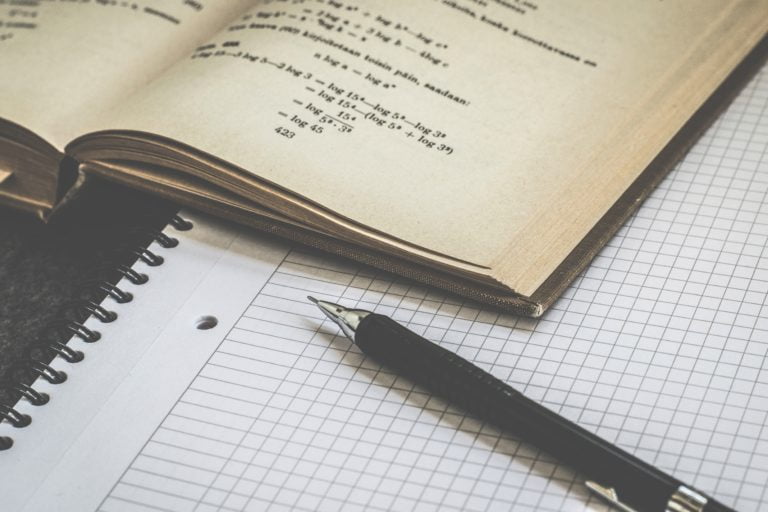Maths is regarded as one of the toughest Leaving Cert subjects there is, however I can assure you it is not. . I have a system that I know works, and it has time and time again. This year 90% of my leaving certs got either a H1 (42%) or a H2 (48%) .
There is no magic or secrets, just a system that works but requires you to work as well.
Understand
You need to understand what you are doing. Ask questions in class. Do not leave the classroom wondering what happened. If you cannot get the answer in class, ask a friend, ask an older sibling. Can a parent help? Get extra help if you can afford it (grinds). There is loads of free material on Youtube.
I have a few examples done in a video on www.revise.ie that might help. Ask questions in
school, loads of them. Repetition in maths is really important. The same ideas appear over and over again, just in different questions.
Learn
You need to learn.
- Words
- Methods
- Formulae.
Do Questions
You need to do examples.
Below it gives you the examples followed by the solution. Cover the answers and see if you can figure out the solution without help.
Here is a snippet of my Algebra notes. Algebra is the engine of Maths; without it you cannot drive through the rest of the course. I always start grinds, both 5th and 6th years, with Algebra.
The notes start with a heading. They have some bit of either terminology or method that you need. Next comes the examples that you need to do. Finally comes the learning – the list you need to know. You need to do the list yourself.
Notation – words to learn
is called an expression or
a polynomial or
a function.
In the the 3 is called the coefficient – these are the numbers in front of the letters.
The is called the variable – these are the letters that stand for different numbers.
The 2 is called the power, indice, exponential or the degree. In this case degree 2 since the highest power in question is 2.
In the 9 is called the constant – these are just numbers with no letters attached has 3 parts known as 3 terms.
Special Polynomials – formulae to learn
The next two expressions appear so often that it is vital that you can spot them from any direction.
These are known as perfect squares.
(a+b)2=a2+2ab+b2
(a–b)2=a2–2ab+b2
So do you understand that if you are asked to multiply 2 letters (terms) by themselves (square) that you have to Square the first, square the second, first by second doubled.
This is where you may need a little extra help go to www.revise.ie I will have a video on perfect square in there for you.
Example 1: Simplify the following: i (2x-3)2 ii (3x+2)2
i (2x-3)2 Use: (a-b)2=a2-2ab+b2
=(2x)2-22x3+32
=4x2-12x+9
(ii) (3x+2)2 Use: (a+b)2=a2+2ab+b2
=(3x)2+23x2+22
=9x2+12x+4
So now the system is set
Understand
Learn
Do
So, let’s look at one more section.
This time cover up the examples and see if you can do them. By the way, there are not enough examples here. This is where homework comes in. When you are given homework, learn the material first and do the homework without any notes.
It starts with a heading. Find factors. Then comes the methods. There are 4 types for junior cert and 5 for leaving cert higher. Mixed in are the examples. At the end I have the need to know.
To Find Factors
Type 1: Factors by Grouping – 2 or 4 terms – take out what’s common.
Factors mean what two terms multiply to give the questions. Like the factors of 8 are 2 by 4.
Example 2: Find factors of each of the following:
take out
These are the factors as in when I multiply these out x by x-8 I will get back to the original x2-8x.
For part (ii) since there are four terms in the questions we know it is factors by grouping so we try to group like terms. This means go 2 by 2 and take out what is common between the 2 of them.
Note In the last example watch out for two things
- Must have the same expression in both brackets so took out –1.
- If nothing will go into two terms we can always take out 1.
Type 2: Quadratic Factors – Trinomial
The method I use here is called guide number. There are other methods that can be used here, which is not the norm. To get the guide number you multiply the coefficient of (did you learn what coefficient is?) by the constant (number on its own). This is such an important section that I have more videos on www.revise.ie for you. The second question below is really hard.
Example 3: Find factors of
- Coefficient of is 2, by the constant, which is +6 so guide number of +12.
We want two numbers to multiply to +12 and add to -7. Ans -4 and -3.
- Coefficient of is 3, by the constant, which is -4 so guide number of -12.
We want two numbers to multiply to -12 and subtract to -1.
Type 3: Difference of two squares
If we have two terms both squared with a minus in the middle we can use the following formula
This can be rewritten as
Example 4: Find factors of each of the following.
4x2-25
(2x)2–52 Write both as squares and use formula =(2x-5)(2x+5)
Type 4: Sum and difference of two cubes (higher leaving cert only)
Two formulae to learn off
Example 5: Find factors of i 8x3+125y3 ii x3+27
i 8x3+125y3=(2x)3+(5y)3–write both terms as cubes.
=2x+5y4x2–10xy+25y2
Using the ‘+’ formula
ii x3+27=x3+33
=x+3x2-3x+9
Type 5: Combinations
These are a combination of any two of the above. As a rule of thumb try to take out what’s common first.
Example 6: Find factors of
Note can be written as This is a really hard higher leaving cert question.
So you want to learn methods. You need your own notes which have the words, the formulae and the methods, nothing else. I call these the ‘Need to know’.
Type 1: Factors by Grouping – 2 or 4 terms – take out what’s common.
Type 2: Quadratic Factors – Trinomial = guide number
Type 3: Difference of two squares
Type 4: Sum and difference of two cubes (higher leaving cert only)
Type 5: Combinations
The list above is my learning. I will keep a small hard back copy or debate cards and will help you to learn the material. Unfortunately I have run out of room. I have a ‘Need to know Algebra’ as an example for you on www.revise.ie but you really, really need to do these yourself.
For parents
If you are an adult and you have looked at this you may have given up on the maths very early in the article. Go back and read it again. Look at the messages that you should try to give your child.
Maths is not impossible.
There is work involved.
The most important thing to ask your child is do you understand what you are doing? You cannot hope an issue will go away then suddenly everything will be ok. It is so important to actually understand. If your child continues to struggle, contact the school.

